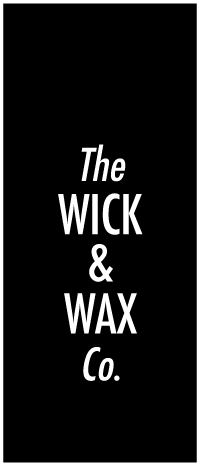Making With Integrity: Soy Wax
Making with integrity.
Using respectfully sourced natural ingredients is a focus for us, and we source waxes that feature ethical and sustainable properties along with British manufacture wherever possible. We strive to maintain an open and honest dialogue about our sourcing and information on the raw materials that we use, so that you, our customer can make an informed purchasing decision.
What is Soy wax?
Soy wax is a vegetable wax derived from 100% soybean oil. It is made of harvested soybeans that are cleaned, hulls removed, cracked, and rolled into flakes. The soybean oil is then extracted from these flakes and hydrogenated. Similar to the process of making vegetable cooking oils. The result is a natural wax that solidifies at room temperature and is ready-made for candle making. Soy wax is a fairly new player in the world of candle making. It was created by the U.S. agribusiness in 1996 as an alternative to petroleum-derived paraffin. This invention has become increasingly popular in recent years with the rising demand for natural candles, and Brands are increasingly choosing to work only with Soy.
Use in candles:
Mainly selected for use in candles due to its consistent performance properties, it is suitable for everyday use and represents excellent value for money. It is also regarded as one of the best candle waxes for container candles.
Not all Soy waxes are equal.
Generally, if a wax blend contains at least 50% Soy, it can (and usually will) be labelled solely as ‘Soy wax’. Even if 45% of the wax is, for example, Palm or Paraffin. Soy wax is often blended with other waxes to capitalise on the best features of both waxes, and other mixes often include vegetable oils such as coconut, palm, rapeseed and sometimes beeswax. More typically, high-end candle makers use a Soy and Paraffin combination. Why - because including a high-quality Paraffin can significantly improve the performance and stability of a ‘fragranced’ candle. Scented candles are a multi-million industry that remains highly lucrative which, unfortunately, means that mineral wax will continue to have a significant presence.
Environmentally speaking, while Soy is largely considered to be a better choice compared to paraffin (Mineral) wax, it still has a few eco issues of its own. Soybean oil is a byproduct of the massive soybean industry and there are concerns over deforestation and the use of pesticides and fertilisers used to grow soybeans. It should also be noted that due to the prevalence of genetically modified soybean crops in the market, ‘most’ major brands of Soy Wax cannot certify their wax as non-GMO.
In the Spring of 2023, we switched our wax to a different formula of Soy, and manufactured here in the U.K, which better meets our high standards of sustainability, performance and consumer safety. Here are some of the features of the Soy wax that we use here at TW&WC:
Features
- All Natural plant-based
- Sourced from a renewable and sustainable crop
- Vegan-friendly
- Biodegradable
- Clean burning (less soot)
- Silky texture
- Stable and clean burn. Will not achieve a full melt pool until 4th or 5th burn which ensures that the glass doesn't get too hot, or the candle burns too quickly. It also means minimal, if any, carbon deposit (sooting, smoking, mushrooming wick).
- Good scent throw both cold and hot (this will vary slightly depending on the specific fragrance used)
- Easy to clean
- Not tested on Animals
- Does not contain residual solvents
- Wax manufactured in the U.K
Disposal
Soy wax is not water-soluble and containers must not be placed in the dishwasher. The best way to remove soy wax from your container so that you may reuse it is to pour hot water into the jar and let the wax release itself from the jar and float to the top. Then, place the wax in a bin or storage box for onward recycling at a recycling centre.
We continue to monitor the Soy market and will always look to improve upon sources, and sustainability-related features wherever possible, whilst also ensuring the product’s performance.
Content last updated: March 2024.
